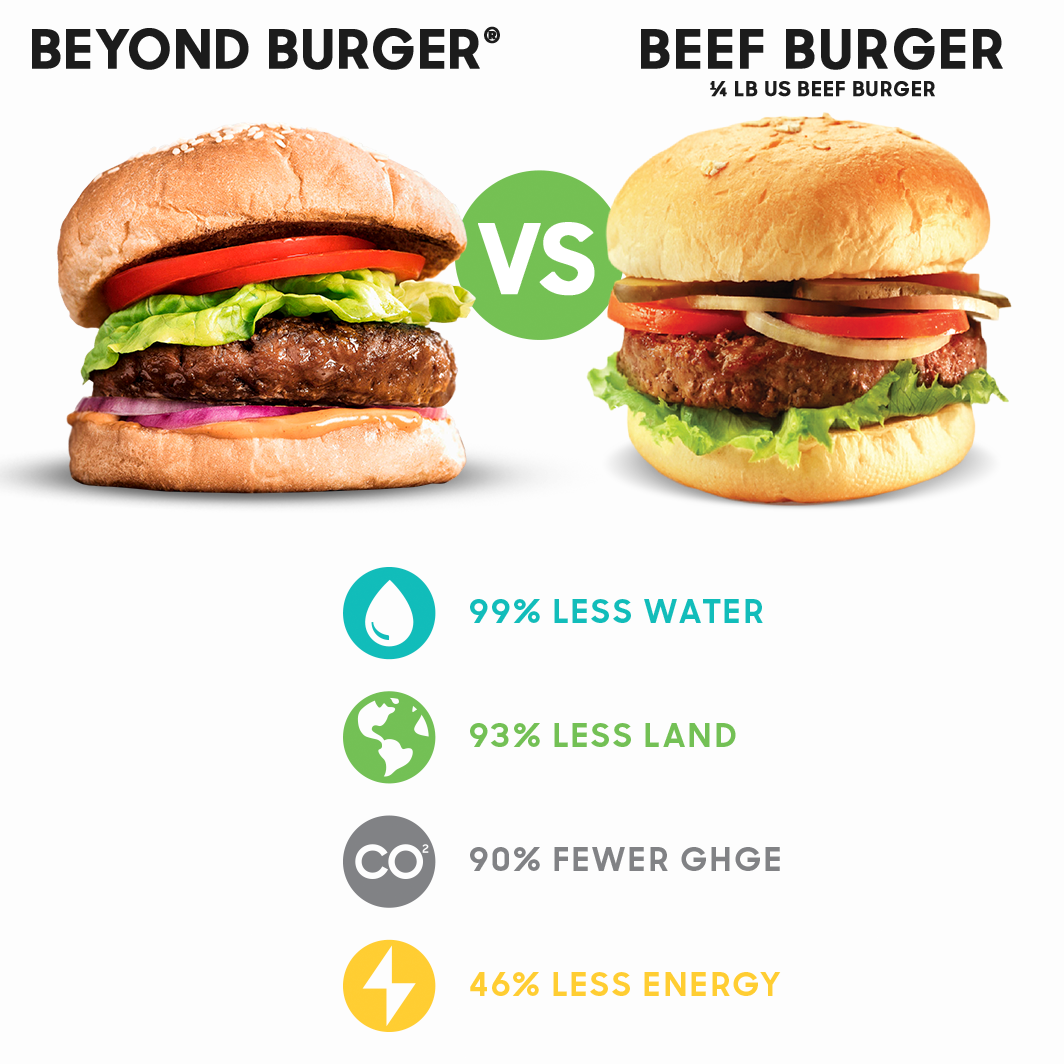

"In the new Beyond Burger platform we developed enhanced flavors that provide more savory, meaty flavors reminiscent of 80/20 ground beef. " We've also added B vitamins and minerals comparable to the micronutrient profile of beef. "We have removed mung bean so the protein in the new Beyond Burgers is sourced from a blend of peas and rice," she told FoodNavigator-USA. The company has not released ingredients lists or Nutrition Facts panels for the products – which will be unveiled in Los Angeles later this week – but head of communications Shira Zackai said there had been some changes to the recipe: Emulsifiers, stabilizers, hydrocolloids.Chocolate and confectionery ingredients.Carbohydrates and fibers (sugar, starches).Plant-based, alt proteins, precision fermentation.“Competition will help to increase the pace of innovation,” Ajami said.īeyond Burger ingredients: water, pea protein isolate, expeller-pressed canola oil, refined coconut oil, contains 2 percent or less of the following: cellulose from bamboo, methylcellulose, potato starch, natural flavor, maltodextrin, yeast extract, salt, sunflower oil, vegetable glycerin, dried yeast, gum Arabic, citrus extract (to protect quality), ascorbic acid (to maintain color), beet juice extract (for color), acetic acid, succinic acid, modified food starch, annatto (for color). Tyson Foods, Springdale, Arkansas, earlier this year ended its investment in Beyond Meat and plans to compete in the alternative meat category. Nestle S.A., Vevey, Switzerland, has launched a plant-based burger in Europe and plans to do the same in the United States. The Impossible Burger, which features soy protein, is found on restaurant menus across America. Plant-based burgers have become a competitive category. Tariush Ajami, Ph.D., chief innovation officer for Beyond Meat Results showed the Beyond Burger generates 90 percent less greenhouse gas emissions, requires 46 percent less energy, has more than 99 percent less impact on water scarcity and has 93 percent less impact on land use than a quarter pound of US beef. The company commissioned the Center for Sustainable Systems at the Univ. The company is launching Beyond Beef, which is crumbles of ground beef that consumers may use in applications like burgers, pasta sauces and tacos.īeyond Meat products fit into the sustainability trend. Beyond Meat has yet to find an ingredient that offers similar functional benefits to methylcellulose.īeyond Meat has found success and expanded its portfolio. The Beyond Burger contains methylcellulose, an ingredient not often associated with clean label, as a binding system. The key is getting the plant protein to work like the fibrous muscle tissue in meat, he said. “They are packed to occupy the smallest space.” “They have a very dense structure,” Ajami said. Ajami said, which means most of the proteins are storage proteins that help the germination process. Plant proteins tend to come from the seed, Dr. Pea protein is the main source of plant protein in the Beyond Burger. To avoid any unwanted gray color, the company adds annatto and beet juice extract. We are soy-free and GMO-free.”īeyond Meat, El Segundo, California, works with flavor companies to understand meat flavors, he said. “I know the ingredient list is way long, but sometimes we have to add those functional (ingredients). “We want to be as clean as possible,” Ajami said in a June 4 presentation in New Orleans at IFT19, the Institute of Food Technologists’ annual meeting and food exposition.


 0 kommentar(er)
0 kommentar(er)
